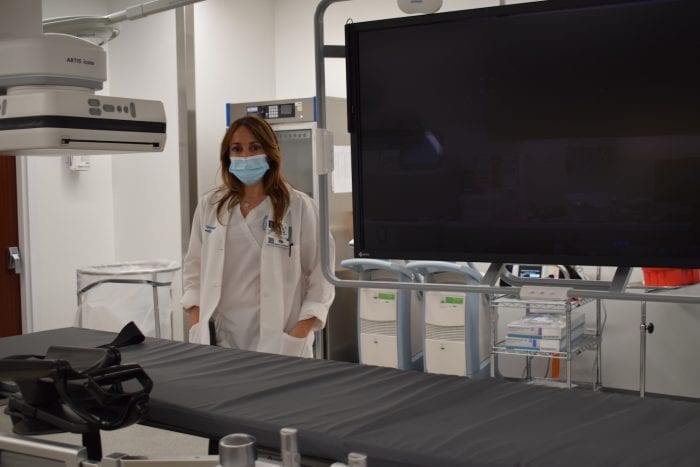By Leah S. Dunaief

This is the time of year when our five senses go into overdrive. Let me enumerate. In no particular order of delight, I’ll start with sound.
The birdsong is sometimes loud enough to provide dance music at a wedding. There are all kinds of musical bars put forth: crooning, warbling, shrieking, hooting, gurgling. There is an incredible range of notes, from high soprano and countertenor to tenor and baritone, even bass. Sometimes the birds seem to be singing in a chorus, other times at counterpoint. If your bedroom window is open, they can wake you up at first light. There can be many birds in the trees or there may just be one mockingbird pretending to be an entire flock.
The sight of the birds is as much a treat as the sounds, if you can spot them among the leaves. They can range from a nondescript small brown chick, who nonetheless utters the most melodious songs, to crimson or orange-breasted or blue-tailed or grandly multi-colored varieties of different sizes and shapes that perch briefly on the porch railing or snack on the front lawn. They can seem the model of purpose as they deliver food to the open beaks of their newly hatched offspring or of patience as they sit quietly atop the eggs and wait for the next generation to appear.
Speaking of sight, we go from the early purple of crocuses and joyful yellow of forsythia and daffodils to the lush pink of dogwood and cherry blossoms to the deep red of tulips and azaleas. All of that artwork is provided against a bright green backdrop of new leaves on the bushes and luxuriant attire for the tree limbs. Branches on either side of the road unite in the air overhead, creating sun-dappled tunnels as we drive the back-way routes.
The waves at the beaches are calm now, climbing the sand with rhythmic whispers, and the seagulls fly low, looking for a fish dinner in the clear blue water. Too soon, there will be motor boats and jet skis on the harbors and lawn mowers and leaf blowers keeping the landscape orderly — but not yet. The magic and peace of early spring are still, however briefly, with us to be treasured.
The smells at the beach of salt in the air and blossom-scent on the breezes are intoxicating harbingers of the season. Lilacs, that always know when it is Mother’s Day, perfume the neighborhood. And among us humans, there are always those early-bird few who fire up the grill and begin to barbeque on a sunny weekend afternoon. If we play our cards right, we might be invited to share in this primitive treat. The taste is so much better than anything cooked indoors.
Taste is tantalized by early fresh fruit, like locally grown strawberries, and by vegetables like baby asparagus and snow peas. Several different kinds of dark green lettuces are also ready for dining early in the spring.
As for touch, there is the sweetness of a gentle breeze, reduced on a rare spring day from a stern wind to a caress against the cheek. It carries with it the promise of a summer day and the seduction of a summer night.
Add to all of that, the temperature in spring can reach a universally perfect range. Now I know some people like it hot, really hot, even up in the 90s when they can happily sweat. And some people like it cold, even freezing, during which time they can feel energized and stimulated to ski and ice skate. But all humans feel comfortable moving about in a temperature of 75 degrees. Knowing that could be found most months in San Diego almost prompted my husband and me to move there some 50 years ago. Of course, there were other things to consider, and we ultimately moved to Long Island.
Not for a moment do I have any regrets. My five senses are glad we live here.































 Julie Nicholson, 29, was last seen at John T. Mather Memorial Hospital, located at 75 North Country Road in Port Jefferson., on May 8 at approximately 7:30 a.m. She was reported missing at approximately 12:40 p.m.
Julie Nicholson, 29, was last seen at John T. Mather Memorial Hospital, located at 75 North Country Road in Port Jefferson., on May 8 at approximately 7:30 a.m. She was reported missing at approximately 12:40 p.m.


